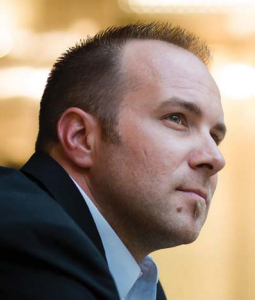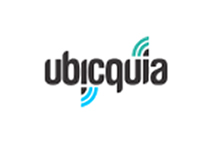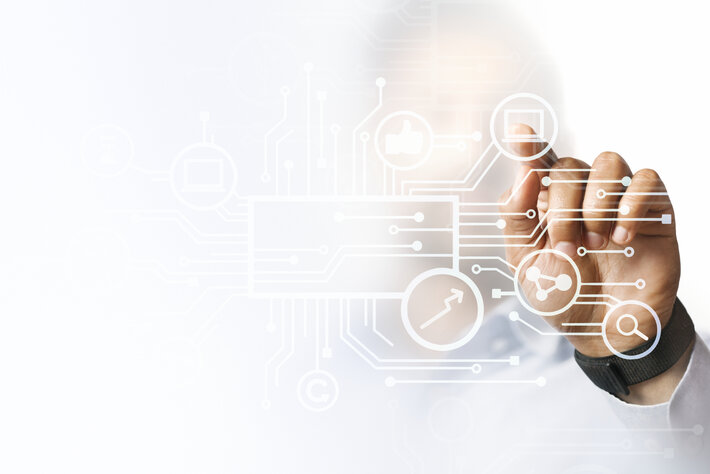Ensuring a sustainable quality of life in cities is both a great challenge and a great opportunity. Worldwide, every day, about one million people move to live in cities and, by 2050, an estimated 70% of the global population will live in an urban environment.
Smart city and IoT technologies aim to improve productivity and transportation, ensure a clean environment, provide sustainable energy and water, give access to healthcare, and provide security. However, if we’re to make smart cites successful, multiple stakeholders including city councils, citizens and enterprises, as well as universities and educational institutions must work together. Moreover, smart city solutions often involve cooperation across an ecosystem of network operators, service providers, system integrators and technology providers. André Malm of analyst firm Berg Insight speaks to Tre Zimmerman, co-founder and Chief Technology Officer at Ubicquia, about how cities can rapidly deploy wireless networks to enable open smart city applications and services.
AM: For readers who are not familiar with Ubicquia, can you introduce us to your company?

TZ: Ubicquia was established to pursue and develop solutions for the Industrial Internet of Things (IIoT) in 2013. We are a ten employee strong and privately funded company headquartered in Wellington, Florida. Ubicquia offers an innovative integrated platform that enables any customer to easily design, deploy and manage IIoT solutions that are cost effective, scalable and secure. The solution uses an IEEE 802.11s mesh network architecture that is ideal for a broad range of smart city applications.
AM: A few years ago when Ubicquia was founded, the company focused on microcontrollers and sensors for the IIoT. In February this year, Ubicquia launched its new Kairo solution that can turn streetlights into a low cost sensory network for entire cities. Can you describe the developments that led to the creation of the Kairo device?
TZ: We understood early on as we began to look at the IIoT market that it was really a ‘Big Data’ issue and for data to be truly big it needed to be collected all the time and everywhere: pervasive and persistent data. We developed our own microcontrollers and systems because cost is a limiting factor in being persistent and pervasive, and nothing on the market met our needs. As we built our boards we began to realise that there were more fundamental issues to fully leveraging the true potential of IIoT and 20 billion connected devices: How do you connect heterogeneous networks and multiple devices in order to deliver seamless IIoT services and applications? Kairo is essentially an amalgam of our basic technology with the realisation that while connectivity may be pervasive, power is not, which is a limiting factor for again leveraging the full economic value of IIoT. The Kairo device is a miniaturised integrated service router that contains all the computing components required to provide networking, storage and communications for IIoT applications. The device is designed for placement on light poles and derives power from the ‘cobra head’ lighting fixture.
The Kairo architecture is meant to encompass all the relevant components – software and hardware – to address large scale IIoT deployments. Our embedded software – the Envira operating system – allows for ingesting any data from a sensing device and visualising that data with our ORCA Stack-enabled cloud so that it can be acted upon by those collecting the data. Our hardware components are easily integrated into our Kairo form factor and expandable by simply inserting a new board. We can also remotely activate the functionally of each board by independently accessing the General-Purpose Input/Output (GPIO) pins of each board.
AM: Kairo is only one part of Ubicquia’s comprehensive IIoT platform. What additional key components do you offer and how are they different from other solutions on the market that already address IIoT and smart city deployments?
TZ: We offer a fully integrated approach, not a pieces and parts approach to delivering a solution. Other solution providers deliver a science project to end-users requiring them to develop the means to collect, compile and transmit data that is required for smart cities. We also assist in resolving the almost intractable issue that is inherent in IIoT, which is networking thousands of devices without needing expensive network facilities such as cellular.
AM: There is already an abundance of connectivity options for IoT deployments available and more to come in the future. Which connectivity and networking technologies do you support today and how can future requirements be met?
TZ: We are completely agnostic as to connectivity and physical networking interfaces. Hardware boards are available to support wireless standards such as Wi-Fi, cellular, satellite, LoRa, SIGFOX, ZigBee and Bluetooth, as well as wireline interfaces such as Ethernet, SONET Ring, fibre and cable. We are also beginning to deploy solutions utilising eSIM technology which will revolutionise and flatten the cellular network bottleneck worldwide. The existing SIM is a hardware interface that restricts the ability of those accessing cellular networks to easily migrate to other networks that may be less expensive, faster or in a different geographic location. By simply turning the hardware interface into a software interface allows for greater flexibility for those utilising these networks at scale.
AM: Creating and deploying smart city applications requires an ecosystem of actors. Can you give a few examples of different companies, organisations and customers that Ubicquia is working with today?
TZ: We already work with LedSource and Ericsson. LedSource is one of the largest LED distributors in the USA with the ability to manufacture, sell, deliver and support our solutions nationwide. Ericsson in one the largest systems integrators in the world. They have a worldwide reach with clients that are asking for the comprehensive IIoT solutions which we develop and provide. Ubicquia would like to develop and license solutions – and provide Original Design Manufacturer (ODM) hardware or white labelled offerings for those solutions to run on – for clients such as LedSource and Ericsson. We do not want to become a typical hardware company with all the attendant extraneous costs that do not enhance the bottom line.
AM: There are numerous applications being deployed that make cities smart. Which are the most common applications enabled by Ubicquia’s platform?
TZ: There are several applications such as public safety – including video surveillance and gunshot detection – street light power management, environmental monitoring, Intelligent Transport Systems (ITS) and public Wi-Fi access.
AM: Can you add examples of customers that have launched pilot/commercial systems, and in which cities and how large these deployments are today?
TZ: Currently we have one large proof of concept and three smaller deployments. We have for instance deployed with Ericsson in Sao Paulo, Brazil. The deployments are not very large given the recent commercialisation of the technology. We are still at the proof of concept stage and have twelve deployments scheduled worldwide through 2016. Demand is highest in Asia and India, with Latin America close behind.
AM: Can you describe Ubicquia’s business model and pricing strategy?
TZ: We aim to heavily subsidise the hardware. Given the cost of our solution – especially hardware – we prefer an ‘as a service’ model or subscription based model where the Kairo device is heavily subsidised and we charge on a per device per month basis or, depending on the solution or service, by bandwidth. We have also discussed giving the device for free for a 5-7 year commitment and instead charging for services.










